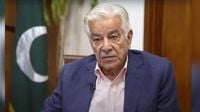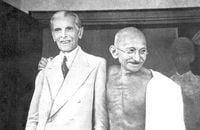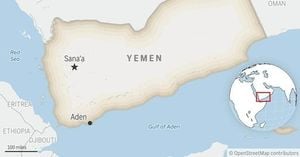Amid a backdrop of simmering animosities and recent military clashes, tensions between India and Pakistan have once again reached a dangerous boiling point. Over the past week, a series of provocative statements, military posturing, and political accusations have reignited fears of another conflict between the two nuclear-armed neighbors—an alarming prospect for a region that has already witnessed the devastating consequences of war.
On October 7, 2025, Pakistan’s Defence Minister Khawaja Asif issued a stark warning during a televised interview, declaring, “Chances of war with India are real and I am not denying that. I do not want escalation, but the risks are real.” According to reporting by Mathrubhumi and PTI, Asif asserted that if armed conflict were to erupt, Pakistan would “achieve a better result than before.” He further claimed that Pakistan has recently gained more supporters and allies, while India, he insisted, has lost backing from countries that were previously supportive before the May 2025 conflict. However, Asif did not name any specific allies, leaving the claim open to interpretation.
Asif’s remarks were not made in a vacuum. They followed a series of warnings from Indian military leaders, most notably Indian Army Chief General Upendra Dwivedi, who declared on October 3 that Pakistan must cease backing state-sponsored terrorism or risk “being erased from the world map.” General Dwivedi’s words, as reported by The Print, were a direct response to the recent escalation, and he warned that India would not show the same restraint in future conflicts as it did during Operation Sindoor in May 2025—a four-day military campaign launched in retaliation for a deadly terror attack in Pahalgam, Jammu and Kashmir, on April 22, which killed 26 civilians.
Operation Sindoor, initiated by India on May 7, 2025, saw Indian forces strike targets in Pakistan-controlled territory for four consecutive days. The operation concluded on May 10 after both countries agreed to halt hostilities, but not before significant damage had been inflicted. Indian Air Chief Marshal A.P. Singh claimed that at least a dozen Pakistani military aircraft, including US-origin F-16s, were destroyed or damaged during the strikes—a claim that Pakistan has not officially confirmed.
The cycle of accusation and counter-accusation has only intensified. On October 8, the Pakistan Army’s 272nd Corps Commanders’ Conference, chaired by Army Chief Field Marshal Asim Munir, pledged to counter any Indian aggression with a “swift and decisive response.” According to the army’s official statement, “Any imaginary new normal will be met with a new normal of swift retributive response.” The conference also reiterated Pakistan’s “uncompromising support” for the Kashmiri people and reviewed the country’s operational readiness and counterterrorism efforts. Munir directed commanders to maintain the highest levels of operational readiness and discipline, emphasizing the need for innovation in the face of evolving threats.
The rhetoric has not been limited to military leaders. Indian Defence Minister Rajnath Singh, speaking at an event in Hyderabad on October 4, stated unequivocally that India would cross any border necessary to protect its citizens and sovereignty. His words echoed the hardening stance on both sides, as each country’s leadership sought to assure their respective populations of their resolve and military preparedness.
Khawaja Asif, for his part, did not shy away from making provocative historical assertions. He claimed that India was never truly united except under Mughal emperor Aurangzeb, contrasting this with Pakistan, which he described as a nation “created in the name of Allah” and united during the May armed confrontations despite internal challenges. “At home, we argue and compete. In a fight with India, we come together,” Asif said, as quoted by Mathrubhumi.
Asif went further, linking Indian Prime Minister Narendra Modi’s recent “provocations” to domestic politics, specifically the upcoming Bihar elections. “With the limited knowledge I have, the Bihar elections could be a reason for these provocations,” he said, suggesting that Modi’s popularity had declined since Pakistan launched “Operation Bunyan Al Marsoos.” He also reiterated unsubstantiated claims that Pakistan downed six Indian fighter jets during Operation Sindoor, calling Indian leadership’s statements “a failed attempt to restore their tarnished reputation.” On social media, Asif doubled down, posting that any future conflict would end with “a far better score than before.”
Adding another layer to the escalating tensions, Pakistan recently welcomed a new defense agreement with Saudi Arabia, calling it a milestone that reflects “shared values, mutual respect, and a joint vision for peace and security” in the Middle East and South Asia. This move, highlighted in The Print, was seen as an attempt by Islamabad to bolster its international standing and signal to India that it is not isolated on the world stage.
While the saber-rattling continues at the highest levels, a sobering essay published by the Asian Peace Programme at the National University of Singapore on October 8 offered a broader perspective on the region’s persistent instability. The essay traced South Asia’s troubled history, noting that the region—which includes India, Pakistan, Bangladesh, and Afghanistan—was once an economic powerhouse, contributing about 30 percent of the world’s GDP before colonization. Today, however, internal contradictions and communal animosity have hampered regional cooperation, leaving South Asia far from realizing its potential as a political and economic engine.
The May 2025 skirmishes, the essay noted, had come perilously close to the use of nuclear weapons, and both India and Pakistan claimed “victory” in the aftermath. In reality, the essay argued, both nations lost, as the conflict risked the lives of thousands and deepened the divide between their peoples. The author called for urgent steps to mitigate the risk of further military clashes and emphasized the crucial role of public intellectuals, artists, and commentators in fostering peace. By highlighting the region’s shared history and cultural commonalities—figures like Gandhi, Jinnah, Tagore, and Akbar, as well as traditions of peace and coexistence—public thinkers could help build bridges even as official channels remain frozen.
The essay also highlighted positive steps such as Pakistan’s rebuilding of the Sikh Gurdwara at Kartarpur, which facilitated religious visits and created goodwill. It urged South Asian countries to promote greater people-to-people movement, religious pilgrimages, and cultural tourism, arguing that such initiatives could foster religious harmony and remind citizens of their shared heritage. Ultimately, the essay contended, concrete, long-term measures are needed to promote harmony and peace, and the media must play a responsible role in reducing hostilities rather than fanning the flames of hatred.
As the region stands at a crossroads, the current atmosphere of mutual suspicion and antagonism threatens not only the stability of India and Pakistan but the broader prospects for peace and prosperity in South Asia. Whether the leaders of both countries can step back from the brink and choose dialogue over confrontation remains to be seen. But as history has shown, the costs of war are always greater than the fleeting satisfaction of claiming victory.





